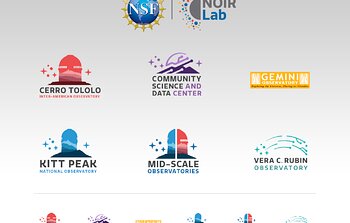Astronomers have discovered the shortest-ever gamma-ray burst (GRB) caused by the implosion of a massive star. Using the international Gemini Observatory, a Program of NSF’s NOIRLab, astronomers identified the cause of this 0.6-second flurry of gamma rays as a supernova explosion in a distant galaxy. GRBs caused by supernovae are usually more than twice as long, which suggests that some short GRBs might actually be imposters — supernova-produced GRBs in disguise.
The release, images and videos are available on:
https://noirlab.edu/public/news/noirlab2121/
Kind regards,
NOIRLab Communications, Education & Engagement
26 July 2021

|
14 July 2021 - rubinann21012
Project & Science News
Rubin Observatory Construction is pleased to introduce an updated mission statement: Build a well-understood system that will produce an unprecedented astronomical data set for studies of ...
|
| Read more |

|
12 July 2021 - ann21027
NOIRLab's new Science website launched today, 12 July 2021. The science website is the culmination of months of work by dozens of NOIRLab staff to migrate information for the science ...
|
| Read more |

|
7 July 2021 - ann21025
For the first time ever, the Solar System Walk — which has been a successful annual fixture in Waimea, Hawai‘i, for several years — will also take place in ...
|
| Read more |

|
2 July 2021 - ann21024
NSF’s NOIRLab is launching four new logos for the NOIRLab family: one each for the Community Science and Data Center (CSDC), Kitt Peak National Observatory (KPNO), ...
|
| Read more |

|
30 June 2021 - rubinann21011
Project & Science News
Don’t forget to register (at this link) for the 2021 Rubin Project and Community Workshop (PCW), which will be held virtually August 9-13.
A comprehensive ...
|
| Read more |
|
|
|
|